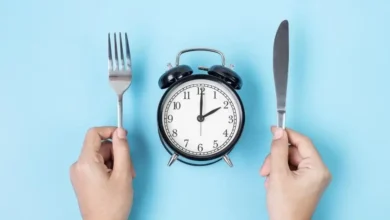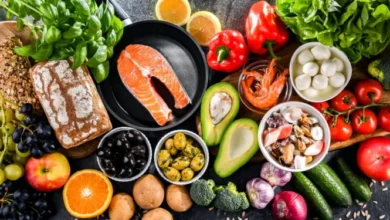Understanding Portion Control Without Counting Calories
When it comes to eating healthy, portion control is often more important than perfection. You don’t need to weigh your food or track every bite in an app to maintain a balanced diet. In fact, for many people, calorie counting feels overwhelming, restrictive, or unsustainable.
The good news? You can learn to manage portions effectively without counting calories—and still nourish your body, feel satisfied, and support your health goals.
Let’s explore how.
Why Portion Control Matters
Even healthy food can lead to weight gain or sluggishness if consistently eaten in large quantities. Portion control helps you:
- Avoid overeating
- Stay in tune with hunger and fullness
- Support digestion and energy
- Maintain or reach a healthy weight
- Reduce bloating and discomfort
And you can do all this without obsessing over numbers.
What’s the Difference Between Serving Size and Portion?
- Serving size is a standardized amount listed on a food label (e.g., 1 cup of rice or 2 tbsp of peanut butter).
- Portion size is the amount you actually eat, which can be more or less than the serving.
The goal is to become aware of your own portions and adjust them based on your needs—not what’s on the package.
Simple Ways to Practice Portion Control (No Counting Required)
1. Use the Hand Portion Guide
Your hand is a powerful (and portable!) portion control tool:
- Protein = the size of your palm (chicken, fish, tofu)
- Carbohydrates = one cupped hand (rice, pasta, grains)
- Vegetables = two cupped hands (greens, broccoli, peppers)
- Fats = the size of your thumb (oil, butter, nut butters)
- Snacks (nuts, dried fruit) = one handful
This method adapts to your body size and works well in real life—no scales or apps needed.
2. Use Smaller Plates and Bowls
Studies show that people naturally eat less when using smaller dishes. It’s a visual trick, but it works!
Try using a:
- 9-inch plate instead of a 12-inch
- Small bowl for cereal or pasta
- Tall, narrow glass for drinks
Smaller containers encourage more mindful serving sizes.
3. Fill Half Your Plate with Veggies
This trick never fails. Vegetables are:
- Low in calories
- High in volume
- Packed with fiber and nutrients
When veggies take up half your plate, there’s naturally less room for overeating other components.
4. Eat Slowly and Listen to Fullness Signals
Your brain takes about 20 minutes to register fullness. Eating slowly helps you avoid passing that “I’m satisfied” point.
Try this:
- Chew each bite thoroughly
- Put your fork down between bites
- Check in halfway through: Am I still hungry? Or just eating because it’s there?
Stopping at “comfortably full” instead of stuffed makes a big difference over time.
5. Pre-Portion Snacks Instead of Eating from the Bag
Ever planned to eat “just a few chips” and suddenly the bag is empty? You’re not alone.
The fix: portion out snacks before you start. Use:
- Small bowls or containers
- Zip-top bags for on-the-go
- Measured handfuls using your palm
This helps you stay aware of how much you’re really eating.
6. Avoid Eating Straight from the Package
Packaging is designed for marketing—not healthy eating. Always serve your food on a plate or in a bowl, even if it’s just a snack. This turns eating into a conscious act, not a mindless habit.
7. Be Aware of Restaurant Portions
Most restaurant meals are 2–3 times bigger than necessary. To keep portions in check:
- Share a meal
- Ask for a to-go box and pack half before you start
- Skip the “clean plate club”—listen to your hunger, not the portion
8. Drink Water Before and During Meals
Sometimes what we perceive as hunger is actually thirst. Drinking a glass of water before eating can help you feel fuller and eat more mindfully.
Water during meals also slows down your pace, aiding digestion and portion awareness.
Mindset Tips for Portion Awareness
- Don’t label foods as “good” or “bad”—portion is what matters most
- Tune in to your body instead of external rules
- Eat what satisfies you and stop when satisfaction turns into excess
Let your body—not numbers—guide you.
Final Thoughts: Find Your Balance
You don’t need a food scale or calorie calculator to eat well. Portion control is about awareness, not restriction. By using simple strategies like hand portions, smaller plates, and mindful eating, you can feel satisfied, stay healthy, and still enjoy the foods you love.
Healthy eating isn’t about being perfect—it’s about being intentional. Start with one or two of these tips today, and you’ll be surprised at how natural it becomes.

Hello! My name is Alan Teixeira and I am passionate about helping people live healthier, more balanced lives. From mindful eating to daily habits that promote physical and mental well-being, I believe that small, consistent changes can lead to powerful transformations.
I created this blog to share practical tips, reliable information, and thoughtful insights that can inspire you to take better care of yourself—with balance, mindfulness, and positivity.
If you are looking to improve your health, nourish your body, and build a lighter, more fulfilling routine, you are in the right place. Welcome!





